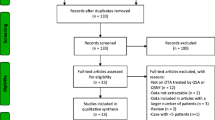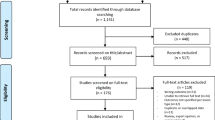Abstract
To identify factors influencing the efficacy of Q-switched laser in the treatment of naevus of Ota in children and to compare the efficacy, safety, and recurrence rate between 1064 nm Q-switched Nd:YAG laser (QSNL) and 755 nm Q-switched alexandrite laser (QSAL). We retrospectively analysed 160 children with naevus of Ota who completed QSAL or QSNL laser treatment at our centre. Age at initial treatment (P = 0.004), colour of lesions (P = 0.025), and number of treatments (P = 0.002) were related to efficacy. Compared with patients aged 0–11 months at initial treatment, patients who started treatment at 1–3 years (OR adj = 0.47), 4–8 years (OR adj = 0.20), and 9–12 years (OR adj = 0.27) had inferior efficacy. The efficacy of brown-violet (OR adj = 2.67) and blue-violet lesions (OR adj = 2.51) was better than that of brown lesions. Moreover, patients who received 3–4 (OR adj = 2.83) or 5–6 (OR adj = 7.35) treatment sessions showed a better response than those who received 1–2 sessions. Additionally, as the age at initial treatment increased, the rate of complications increased from 2.0 to 14.3%, while the recurrence rate decreased from 8.2 to 0%. In addition, the complication rate increased with an increase in the number of treatments. There were no significant differences in clinical efficacy (P = 0.94), risk of complications (P = 0.752), or recurrence (P = 0.834) between QSAL and QSNL for treating naevus of Ota in children. QSAL and QSNL are equally effective for children’s naevus of Ota, with low complications and recurrence rates. Younger age at initial treatment and a greater number of treatments are beneficial for efficacy, whereas brown lesions are a negative factor.


Similar content being viewed by others
References
Ota M (1939) Nevus fusco-caeruleus ophthalmo-maxillaris. Jpn. J Dermatol 46:369–372
Hidano A, Kajima H, Ikeda S, Mizutani H, Miyasato H, Niimura M (1967) Natural history of nevus of Ota. Arch Dermatol 95(2):187–195
Kopf AW, Weidman AI (1962) Nevus of Ota. Arch Dermatol 85:195–208. https://doi.org/10.1001/archderm.1962.01590020035005
Lowe NJ, Wieder JM, Sawcer D, Burrows P, Chalet M (1993) Nevus of Ota: treatment with high energy fluences of the Q-switched ruby laser. J Am Acad Dermatol 29(6):997–1001. https://doi.org/10.1016/0190-9622(93)70280-7
Williams NM, Gurnani P, Long J, Reynolds J, Pan Y, Suzuki T et al (2021) Comparing the efficacy and safety of Q-switched and picosecond lasers in the treatment of nevus of Ota: a systematic review and meta-analysis. Lasers Med Sci 36(4):723–733. https://doi.org/10.1007/s10103-020-03125-9
Shah VV, Bray FN, Aldahan AS, Mlacker S, Nouri K (2016) Lasers and nevus of Ota: a comprehensive review. Lasers Med Sci 31(1):179–185. https://doi.org/10.1007/s10103-015-1834-2
Sami L, Changzheng H, Yan L (2016) Factors affecting response, number of laser sessions and complications in nevus of Ota treated by Q-switched alexandrite laser: a retrospective study. G Ital Dermatol Venereol 151(2):160–168
Achavanuntakul P, Manuskiatti W, Wanitphakdeedecha R, Jantarakolica T (2022) Early treatment initiation improves outcomes in nevus of Ota: a 10-year retrospective study. Am J Clin Dermatol 23(1):105–114. https://doi.org/10.1007/s40257-021-00637-0
H T. Uber eine in Japan haufig vorkom-mende Navusform (1939) Naevus fusco-caeruleus opthalmo-maxillaris Ota,’ I: Mitteilung: beobachtunguber lokalisation, verfarbung, anordnung and histologische veranderung. Jpn JDermatol 46:435–51
Sethuraman G, Sharma VK, Sreenivas V (2013) Melanin index in assessing the treatment efficacy of 1064 nm Q switched Nd-Yag laser in nevus of Ota. J Cutan Aesthet Surg 6(4):189–193. https://doi.org/10.4103/0974-2077.123398
Yan L, Di L, Weihua W, Feng L, Ruilian L, Jun Z et al (2018) A study on the clinical characteristics of treating nevus of Ota by Q-switched Nd:YAG laser. Lasers Med Sci 33(1):89–93. https://doi.org/10.1007/s10103-017-2342-3
Saitoh A, Aizawa Y, Sato I, Hirano H, Sakai T, Mori M (2015) Skin thickness in young infants and adolescents: applications for intradermal vaccination. Vaccine 33(29):3384–3391. https://doi.org/10.1016/j.vaccine.2015.04.081
Stamatas GN, Nikolovski J, Mack MC, Kollias N (2011) Infant skin physiology and development during the first years of life: a review of recent findings based on in vivo studies. Int J Cosmet Sci 33(1):17–24. https://doi.org/10.1111/j.1468-2494.2010.00611.x
Choi JE, Lee JB, Park KB, Kim BS, Yeo UC, Huh CH et al (2015) A retrospective analysis of the clinical efficacies of Q-switched Alexandrite and Q-switched Nd:YAG lasers in the treatment of nevus of Ota in Korean patients. J Dermatolog Treat 26(3):240–245. https://doi.org/10.3109/09546634.2014.930409
Miyamoto H, Takiwaki H, Yamano M, Ahsan K, Nakanishi H (1997) Color analysis of nevus of Ota for evaluation of treatment with a Q-switched alexandrite laser. Skin Res Technol 3(1):45–48. https://doi.org/10.1111/j.1600-0846.1997.tb00159.x
Liu Y, Zeng W, Geng S (2016) A retrospective study on the characteristics of treating nevus of Ota by 1064-nm Q-switched neodymium-doped yttrium aluminum garnet laser. Indian J Dermatol 61(3):347. https://doi.org/10.4103/0019-5154.182470
Hirayama T, Suzuki T (1991) A new classification of Ota’s nevus based on histopathological features. Dermatologica 183(3):169–172. https://doi.org/10.1159/000247663
Badawi A, Osman MA, Kassab AN (2020) Treatment of nevus of Ota and Ito and epidermal nevus syndrome. Hautarzt 71(12):926–931. https://doi.org/10.1007/s00105-020-04710-3
Lu Z, Chen J, Wang X, Fang L, Jiao S, Huang W (2000) Effect of Q-switched alexandrite laser irradiation on dermal melanocytes of nevus of Ota. Chin Med J (Engl) 113(1):49–52
Baranska A, Shawket A, Jouve M, Baratin M, Malosse C, Voluzan O et al (2018) Unveiling skin macrophage dynamics explains both tattoo persistence and strenuous removal. J Exp Med 215(4):1115–1133. https://doi.org/10.1084/jem.20171608
Zong W, Lin T (2014) A retrospective study on laser treatment of nevus of Ota in Chinese children–a seven-year follow-up. J Cosmet Laser Ther 16(4):156–160. https://doi.org/10.3109/14764172.2014.910077
Funding
This work was funded by the National Natural Science Foundation of China (52036007) to Bin Chen.
Author information
Authors and Affiliations
Corresponding authors
Ethics declarations
Consent to participate/publication
Patients gave their informed consent to participate in this study.
Conflict of interest
The authors declare no competing interests.
Additional information
Publisher's note
Springer Nature remains neutral with regard to jurisdictional claims in published maps and institutional affiliations.
Rights and permissions
Springer Nature or its licensor (e.g. a society or other partner) holds exclusive rights to this article under a publishing agreement with the author(s) or other rightsholder(s); author self-archiving of the accepted manuscript version of this article is solely governed by the terms of such publishing agreement and applicable law.
About this article
Cite this article
Zhou, H., Du, X., Wang, Z. et al. Efficacy and safety of Q-switched lasers for the treatment of naevus of Ota in children: a retrospective analysis. Lasers Med Sci 38, 64 (2023). https://doi.org/10.1007/s10103-023-03724-2
Received:
Accepted:
Published:
DOI: https://doi.org/10.1007/s10103-023-03724-2




